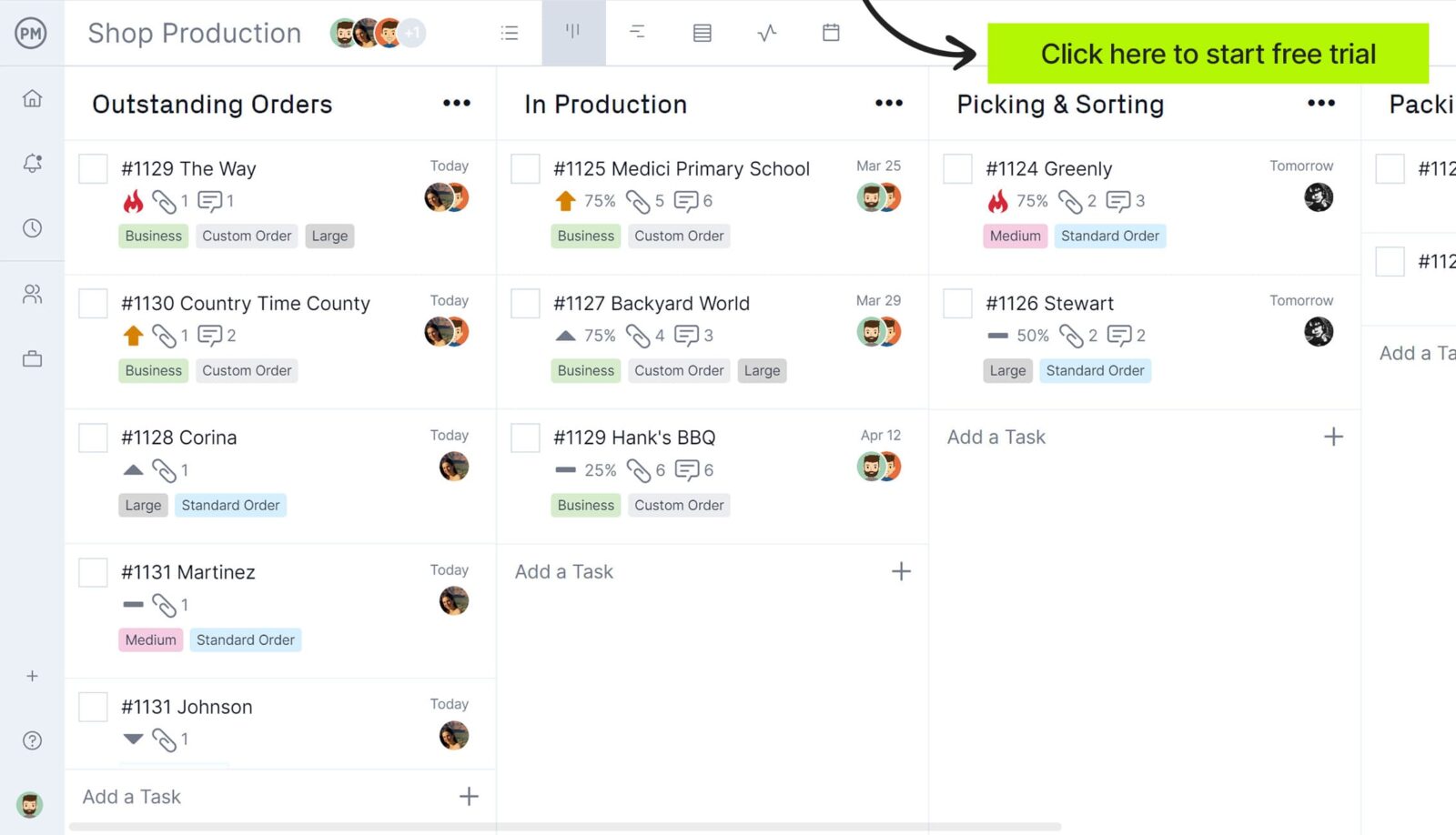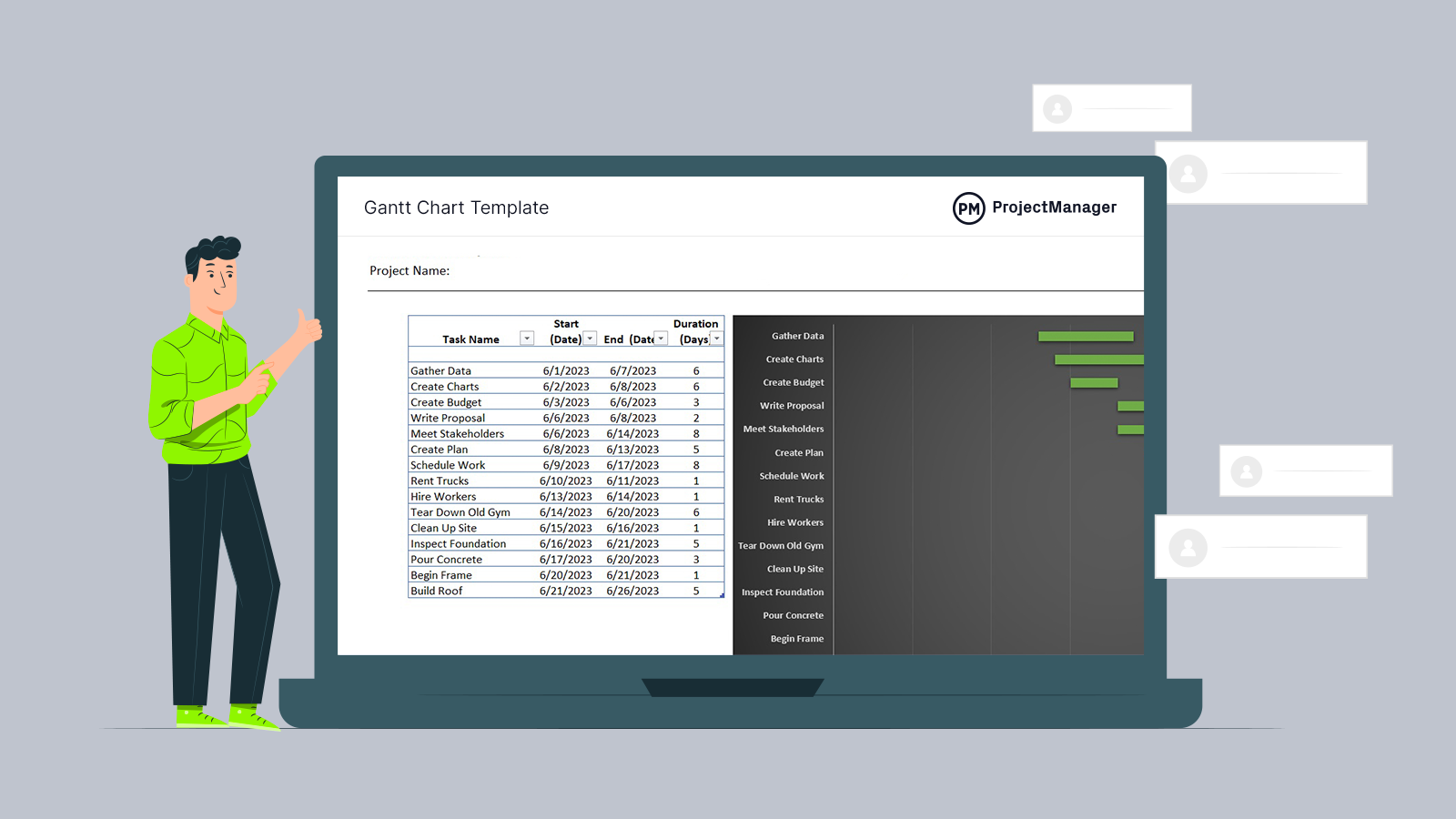In a sense, project management is a service industry, and the people that project managers serve are the clients. The client is the reason for a project, the spark that sets it off and then later glows with satisfaction when the project is complete.
Therefore, client management is one more hat any successful manager must wear. Because even if you complete a project on time and under budget, but your client isn’t satisfied, then you haven’t delivered a successful project. Now that we’ve touched on how important client management is, let’s dig deeper and define the term.
What Is Client Management?
Client management is a method of managing the relationship between a company and its customer base, regardless of the industry. Client management takes responsibility for all aspects of the working relationship between clients and the company to ensure the highest quality in terms of deliverables and client satisfaction.

Client management can be broken down into four parts:
- Knowing the client’s needs and what they’re asking for
- Delivering on those needs and responding to their queries
- Figuring out what the client needs before they know it
- Having targeted communications that respond to client needs
One way to attain this information is by gathering data and then analyzing it, data such as a client’s old projects, their history with your company or their typical business practices. Using reporting tools to analyze data can reveal new ways to improve business relationships, thereby boosting client satisfaction and retention.
Main Principles of Client Management
As in any process, there are standard principles that create boundaries and set realistic expectations. The main ones for client management are outlined below.
Transparency
No one likes to feel as if they’re not getting the full story. If your client feels that way, rightly or wrongly, then they’ll fill in the gaps themselves. That means you’re not controlling the narrative, and the management of your clients will start to go off the rails.
Transparency is king. While clients don’t need to get bogged down in the details of the project, they should be regularly updated on the broad strokes of the project and any decisions made throughout the project should be thoroughly explained.
Communication
To facilitate that transparency, communication is key, and it must be constant. That said, the communication stream is directed by the client. They set the frequency.
There’s no reason to inundate them with unnecessary missives that will just shut them down, so when critical information is delivered they’ll miss it. Also, discern how they want the communications disseminated, by email, phone, personal presentation, etc.
Alignment
The information you share must align with the needs of the client. What key performance indicators (KPIs) are they looking for? Your project reporting needs to speak to those concerns. What you believe to be most important might not be what the client feels is most important.
Client Management Steps
As stated above, client management is one of the most important priorities for any organization that executes projects for others. Here are some of the key steps you can follow for managing project clients, no matter what industry you’re in.
1. Gather Client Project Requirements
The first step is to understand what your client’s requirements are. This should be done early in the project. Interview your client and get a thorough understanding of what they expect from the project. Create a document when gathering these requirements and have the client sign off on them.
2. Set Clear Expectations from the Beginning
After you’ve gathered the client’s project requirements, you need to set clear expectations in terms of what you can deliver and when you can deliver it. This, again, should be done at the earliest opportunity and captured in a document the client signs off on.
3. Establish a Project Success Criteria
To know if the project succeeds requires a means of measuring success. Develop key performance indicators (KPIs) and track them throughout the project to ensure that you deliver a successful project.
4. Create a Realistic Project Timeline
With requirements, expectations and metrics behind you, it’s now time to list all the tasks needed to complete the project and prioritize them. You’ll want to schedule the tasks in some kind of order to ensure that they’re finished by whatever deadline has been set.
5. Estimate Project Costs Accurately
Using the tasks you’ve listed, think of all the resources that will be needed to execute them and the cost of each of these resources. You’ll want to make the most accurate estimates possible, especially if your profit margin depends on it, so use historical data, expert advice and any other information that can help you better forecast costs.
6. Control the Quality of Your Products and Deliverables
Throughout the project, you’ll want to have some quality assurance or testing measures in place to ensure that everything you do meets quality expectations. If you’re using automated workflows be sure to have task authorization so that deliverables are checked by someone with authority to sign off on them.
7. Report on Progress
Stakeholders are going to be eager to know how the project is going. To manage them, you’ll want to set up regular meetings where you can present project reporting, such as status or portfolio reports, to keep them updated. Reports can also help to ensure that the project is meeting your schedule and budget constraints.
8. Ask for Feedback Along the Way
Part of communication and being responsive is having a system in place to capture client feedback. Being heard is the flipside of speaking. You give your clients the space to talk, listen actively and then respond seriously. One way to make sure all these steps are taken, and nothing falls through the cracks, is to have a process. That can be email, meetings or whatever works.
9. Deliver the Project as Expected
Client management is all about delivering the project on time and within its budget. You also need to meet quality standards. If you can deliver the project meeting all these objectives, you’ll have a happy client.
10. Follow Up
Once the project is over, don’t be a stranger. Stay in touch with your client. If there’s any maintenance involved, help with that. Ask questions. Find out if there were any mistakes and use that feedback as a lesson-learned opportunity to do better next time.

What Is the Role of a Client Manager?
Usually, client management is run by a client manager, who is part of the sales team. However, the point of contact between a client and the project team could be the project manager or some other person in authority.
Regardless of who leads the client management initiative, their responsibilities swing from internal to external concerns. They need to work on both taking advantage of profit opportunities and balancing that with customer satisfaction.
This includes account planning, where opportunities are identified, and risk assessment. Part of this is building relationships, communications, loyalty and coordination with other accounts.
How to Keep Clients
The whole point of client management is to retain your client. The way to do that is to make them happy and fulfill their expectations for the project. But how? Here are some practical tips to help.
Create a Roadmap
To live up to the principles stated above, you need to have a roadmap to show your clients, so they’re not constantly chanting from the backseat, “Are we there yet?” You already have a project plan, but that’s too detailed for the client’s needs. Instead, you want to create a document that will show them what is happening, when it’s happening and the date it should be completed. Stick to high-level tasks.

Get your free
Gantt Chart Template
Use this free Gantt Chart Template for Excel to manage your projects better.
Share Progress
As noted, communication is a critical factor in managing clients and keeping them informed and happy. It’s up to the client whether you notify them about every task or just the milestones, but nothing is gained by avoiding the delivery of information. Keeping the client in the dark, whether intentionally or just because you’re busy, is the worst thing you can do to a client.
Keep a Paper Trail
Everything needs documentation and a sign-off. You want to have proof that work was completed satisfactorily for every party concerned. Those documents should be archived and stored on a platform accessible by both manager and client, like an online project management software with file storage. If there are changes, everyone will have access to them, and there will be no misunderstandings because everything is outlined and shared.
Be Responsive
When a client asks, you answer. That doesn’t mean you drop everything, but it also doesn’t mean you take your time responding. Set up a reasonable expectation for turnaround on any client question. It shouldn’t be more than 24 hours, so no matter how busy you are, there is always some point in the day to take a minute to answer a client’s query.
How to Attract New Clients
While you want to keep those clients you already have, it’s also important to cast the net wide for new clients. Here are some steps you can take to win new clients.
- Who is your ideal client?: There are lots of fish in the sea, but you only want to catch the ones that are right for your organization. To help whittle down the field, sketch a picture of your ideal client. Use existing clients and the skills and experience you offer to help narrow down your choices.
- Be where the clients are: Where do your best potential clients spend their time? Are they online, or on some professional platform like LinkedIn or elsewhere? Find out and network.
- Be social: Have an online strategy for your business to attract clients. Once you know who they are and where they are, you can target your online advertising, social platforms or other programs to let them know who you are and why you can help them.
- Seek referrals: Word of mouth is a great way to get new clients. If you have a slate of satisfied clients, see if they can offer your services to others in their network.
Related Client Management Content
- Client Presentations 101: How to Give a Client Presentation
- How to Write a Client Brief (Example & Template Included)
- The Importance of Customer Development for Startups
- Free Service Report Template for Word
- Free Client Intake Form for Word
- Ways Project Managers Can Help with Customer Engagement
- Ways to Collect Better Customer Feedback
If you’re looking to keep your clients happy and move their projects forward successfully, then you’ll need a project management tool. ProjectManager is online project management software with real-time dashboards for tracking progress, Gantt charts for planning and unlimited file storage for an always-accessible archive. Try it for yourself with this free 30-day trial.

